Abstract
Experiments were designed to determine the significance of dark CO2 fixation in excised maize roots, carrot slices and excised tomato roots grown in tissue culture. Bicarbonate-14C was used to determine the pathway and amounts of CO2 fixation, while leucine-14C was used to estimate protein synthesis in tissues aerated with various levels of CO2.
Organic acids were labeled from bicarbonate-14C, with malate being the major labeled acid. Only glutamate and aspartate were labeled in the amino acid fraction and these 2 amino acids comprised over 90% of the 14C label in the ethanol-water insoluble residue.
Studies with leucine-14C as an indicator of protein synthesis in carrot slices and tomato roots showed that those tissues aerated with air incorporated 33% more leucine-14C into protein than those aerated with CO2-free air. Growth of excised tomato roots aerated with air was 50% more than growth of tissue aerated with CO2-free air. These studies are consistent with the suggestion that dark fixation of CO2 is involved in the growth of plant tissues.
Full text
PDF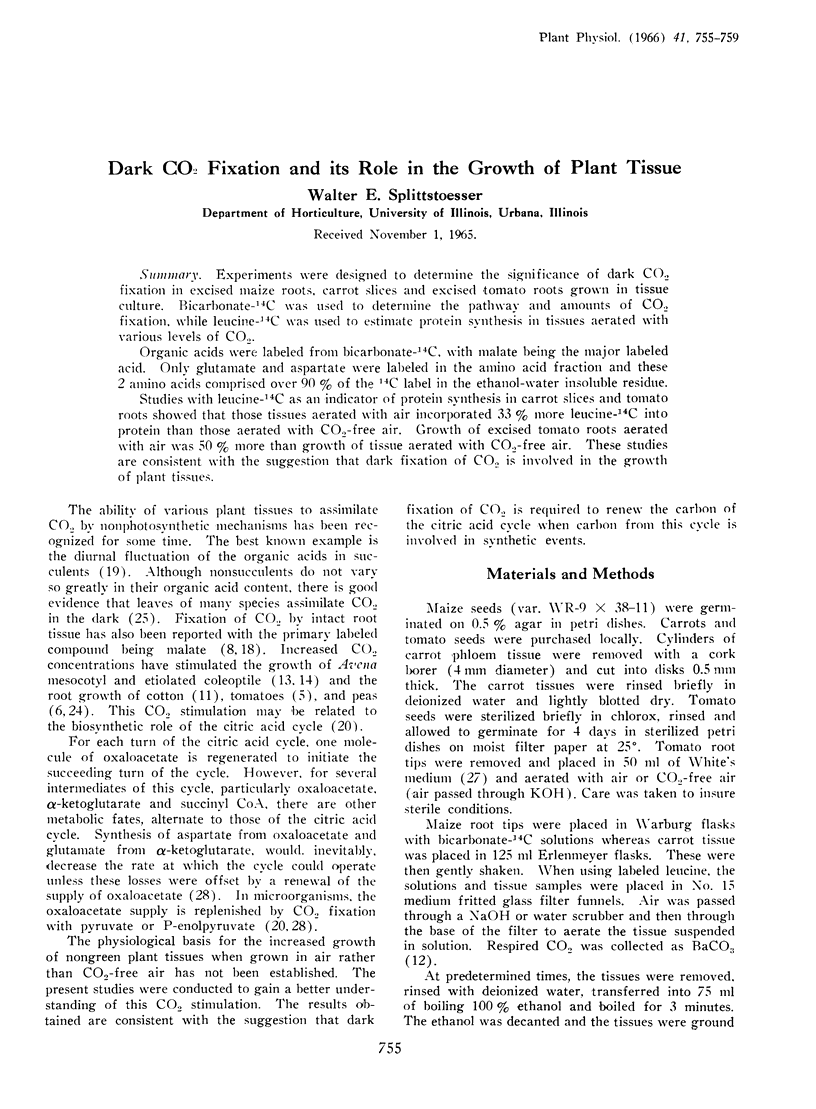
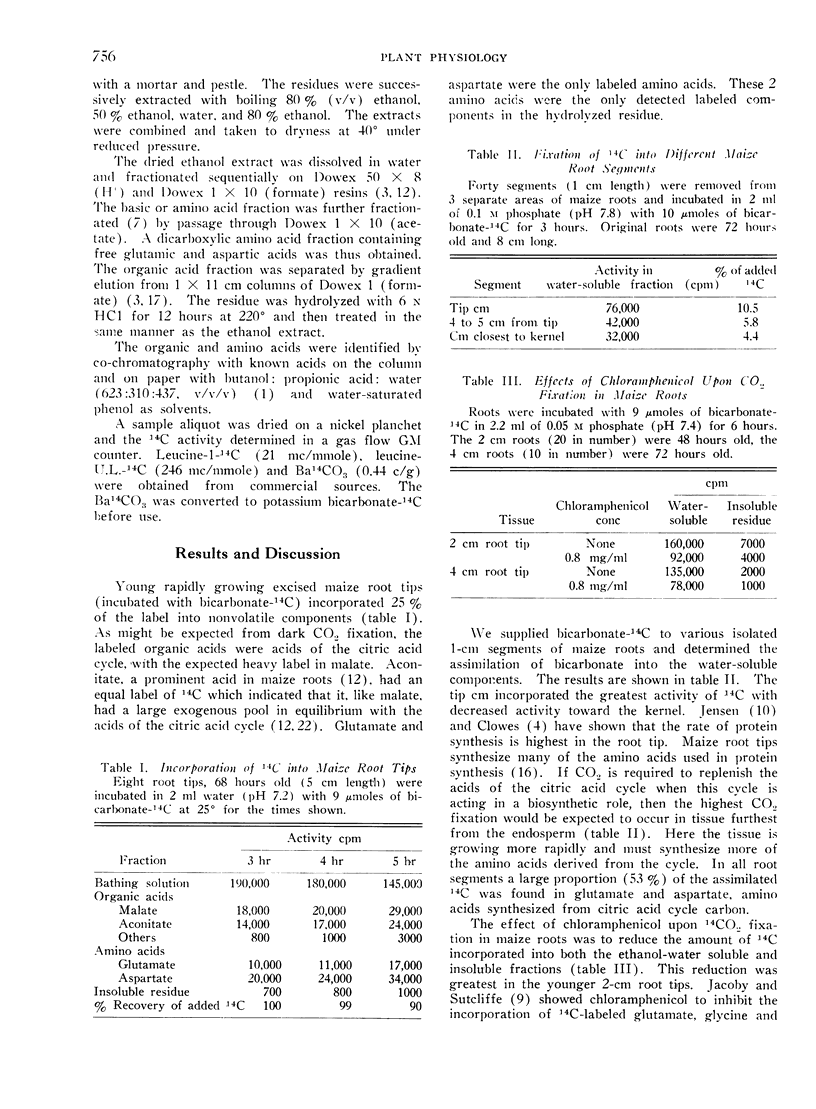
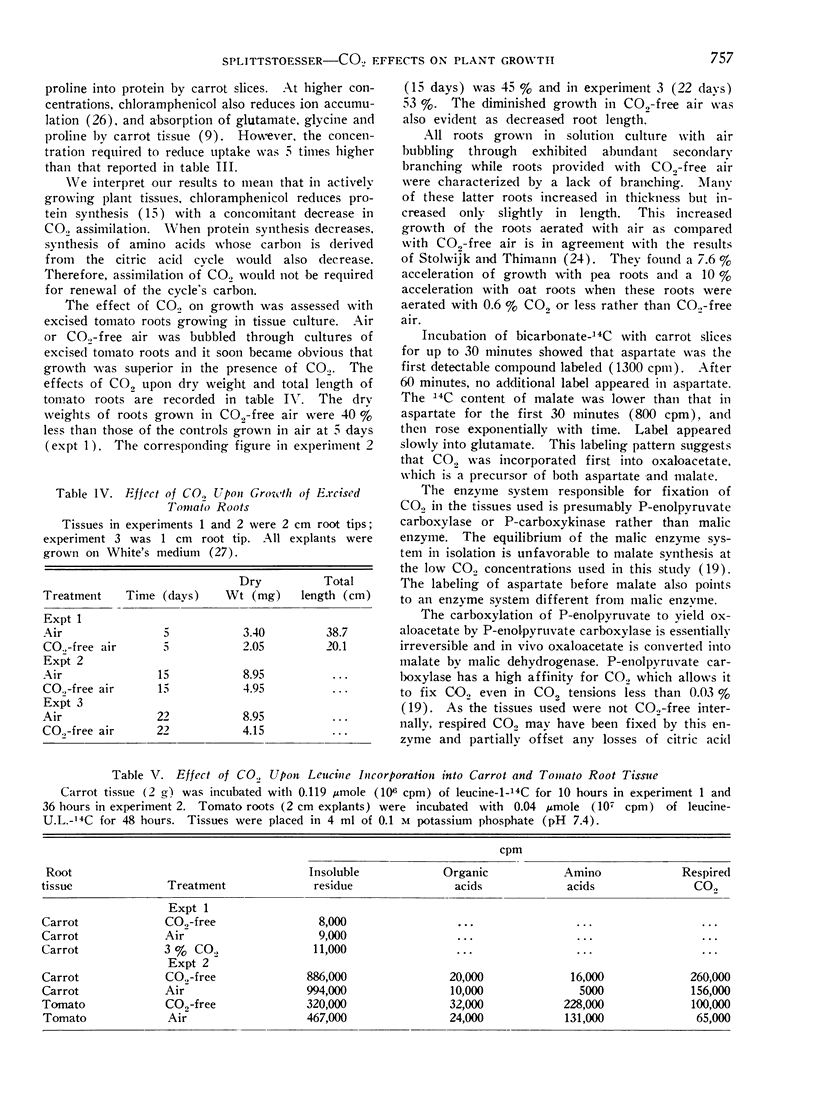
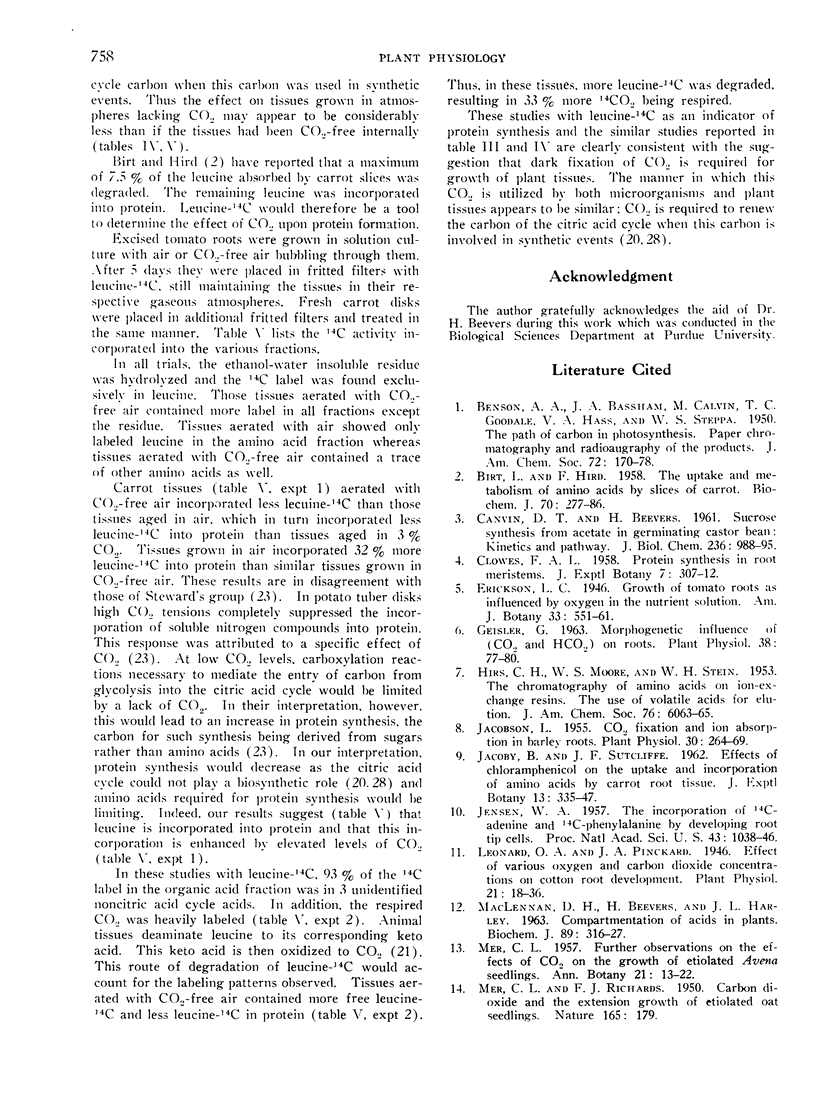
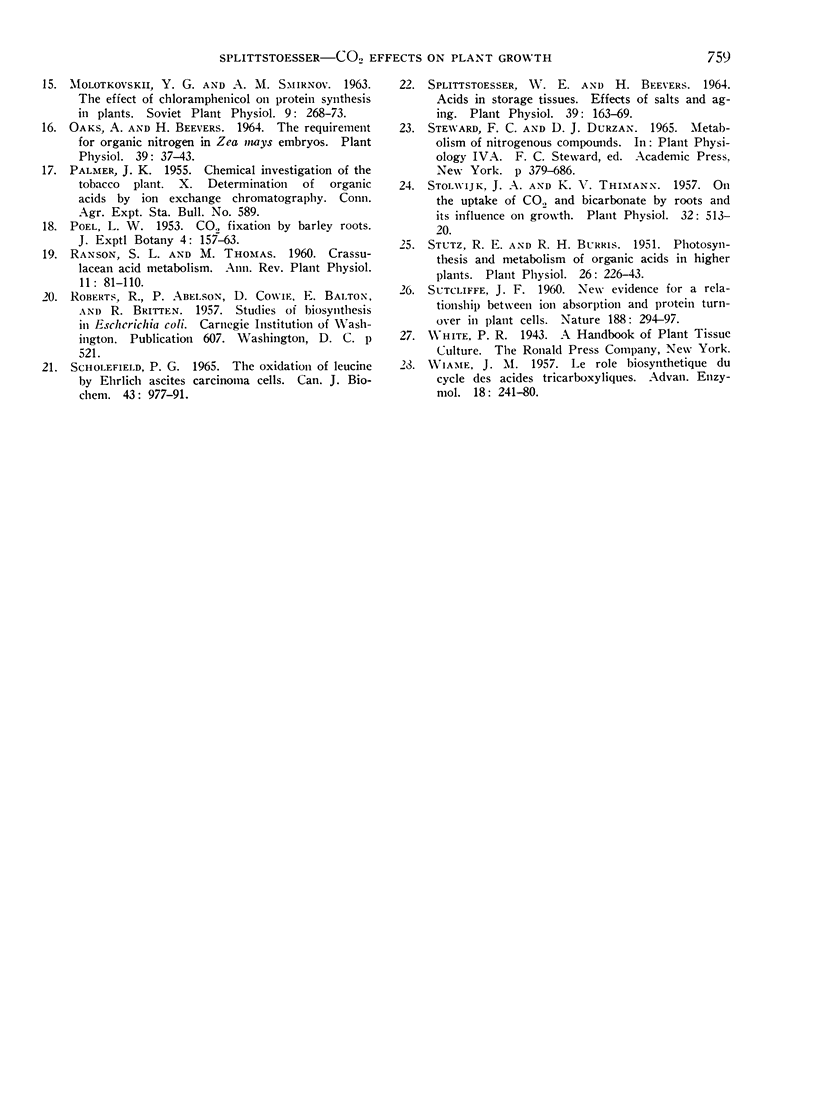
Selected References
These references are in PubMed. This may not be the complete list of references from this article.
- BIRT L. M., HIRD F. J. The uptake and metabolism of amino acids by slices of carrot. Biochem J. 1958 Oct;70(2):277–286. doi: 10.1042/bj0700277. [DOI] [PMC free article] [PubMed] [Google Scholar]
- CANVIN D. T., BEEVERS H. Sucrose synthesis from acetate in the germinating castor bean: kinetics and pathway. J Biol Chem. 1961 Apr;236:988–995. [PubMed] [Google Scholar]
- Geisler G. Morphogenetic Influence of (CO(2) + HCO(3)) on Roots. Plant Physiol. 1963 Jan;38(1):77–80. doi: 10.1104/pp.38.1.77. [DOI] [PMC free article] [PubMed] [Google Scholar]
- Jacobson L. Carbon Dioxide Fixation and Ion Absorption in Barley Roots. Plant Physiol. 1955 May;30(3):264–269. doi: 10.1104/pp.30.3.264. [DOI] [PMC free article] [PubMed] [Google Scholar]
- Jensen W. A. THE INCORPORATION OF C-ADENINE AND C-PHENYLALANINE BY DEVELOPING ROOT-TIP CELLS. Proc Natl Acad Sci U S A. 1957 Dec 15;43(12):1038–1046. doi: 10.1073/pnas.43.12.1038. [DOI] [PMC free article] [PubMed] [Google Scholar]
- Leonard O. A., Pinckard J. A. EFFECT OF VARIOUS OXYGEN AND CARBON DIOXIDE CONCENTRATIONS ON COTTON ROOT DEVELOPMENT. Plant Physiol. 1946 Jan;21(1):18–36. doi: 10.1104/pp.21.1.18. [DOI] [PMC free article] [PubMed] [Google Scholar]
- Maclennan D. H., Beevers H., Harley J. L. 'Compartmentation' of acids in plant tissues. Biochem J. 1963 Nov;89(2):316–327. doi: 10.1042/bj0890316. [DOI] [PMC free article] [PubMed] [Google Scholar]
- Oaks A., Beevers H. The Requirement for Organic Nitrogen in Zea mays Embryos. Plant Physiol. 1964 Jan;39(1):37–43. doi: 10.1104/pp.39.1.37. [DOI] [PMC free article] [PubMed] [Google Scholar]
- Scholefield P. G. The oxidation of leucine by Ehrlich ascites carcinoma cells. Can J Biochem. 1965 Jul;43(7):977–991. doi: 10.1139/o65-111. [DOI] [PubMed] [Google Scholar]
- Splittstoesser W. E., Beevers H. Acids in Storage Tissues. Effects of Salts and Aging. Plant Physiol. 1964 Mar;39(2):163–169. doi: 10.1104/pp.39.2.163. [DOI] [PMC free article] [PubMed] [Google Scholar]
- Stutz R. E., Burris R. H. PHOTOSYNTHESIS AND METABOLISM OF ORGANIC ACIDS IN HIGHER PLANTS. Plant Physiol. 1951 Apr;26(2):226–243. doi: 10.1104/pp.26.2.226. [DOI] [PMC free article] [PubMed] [Google Scholar]


